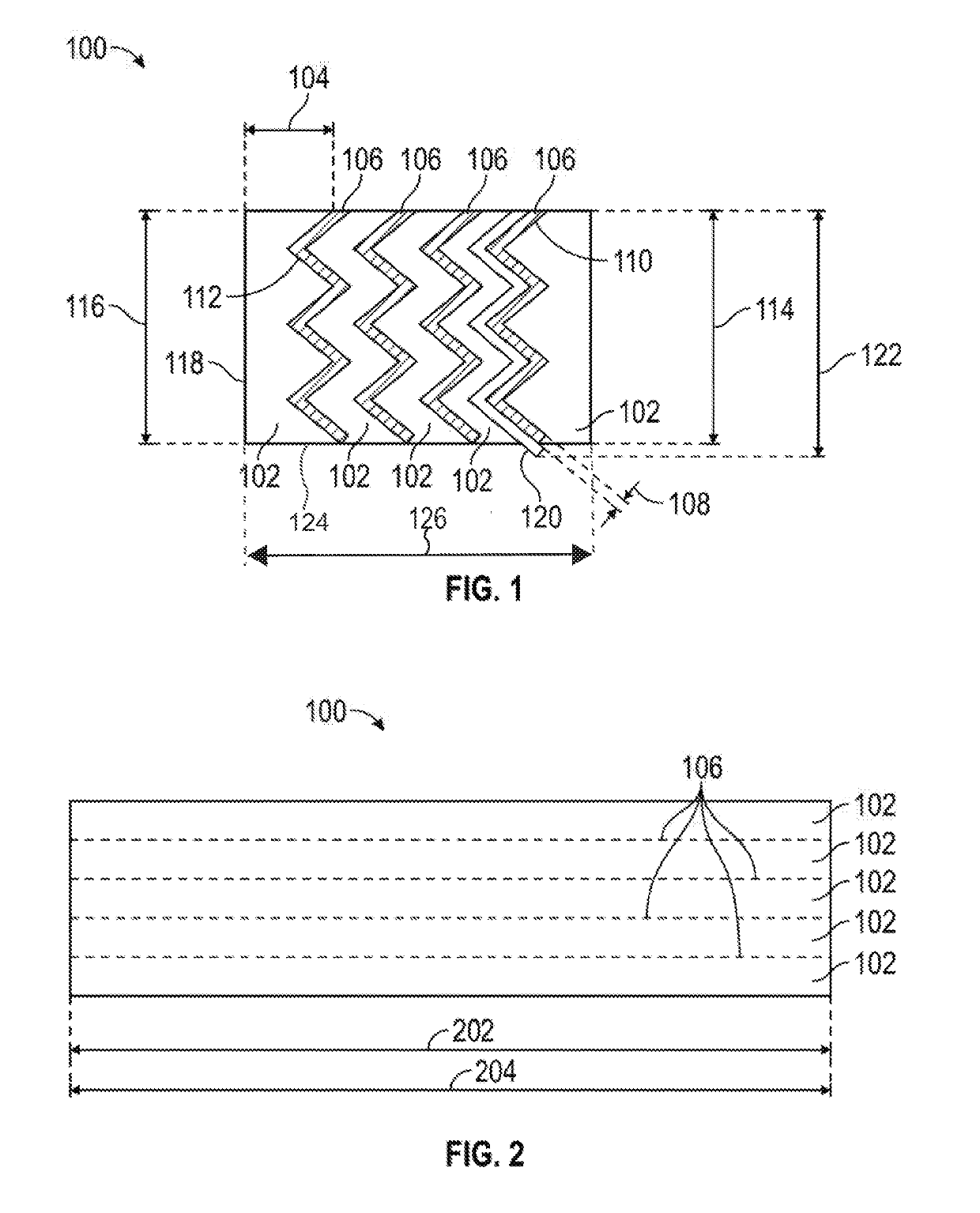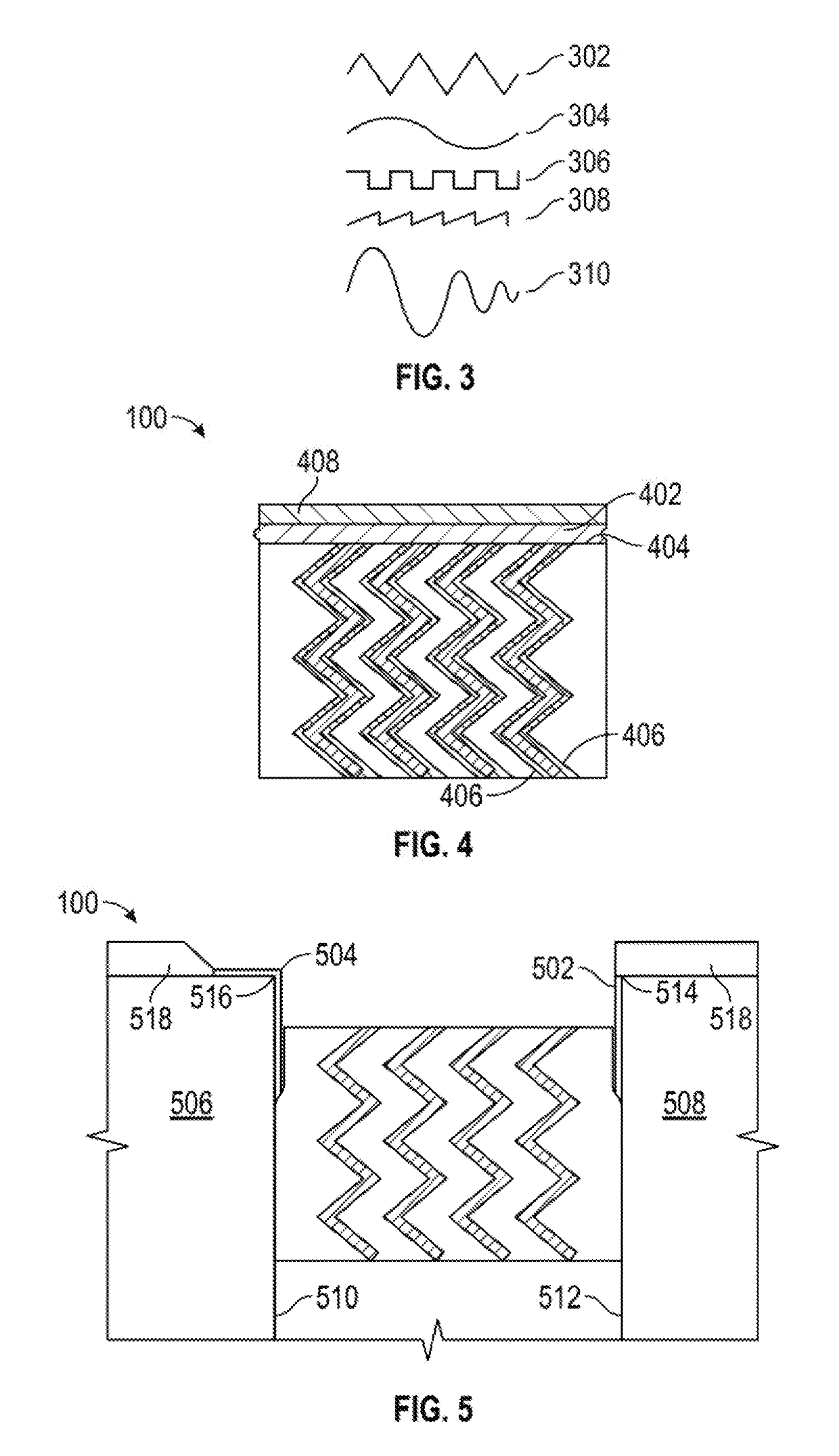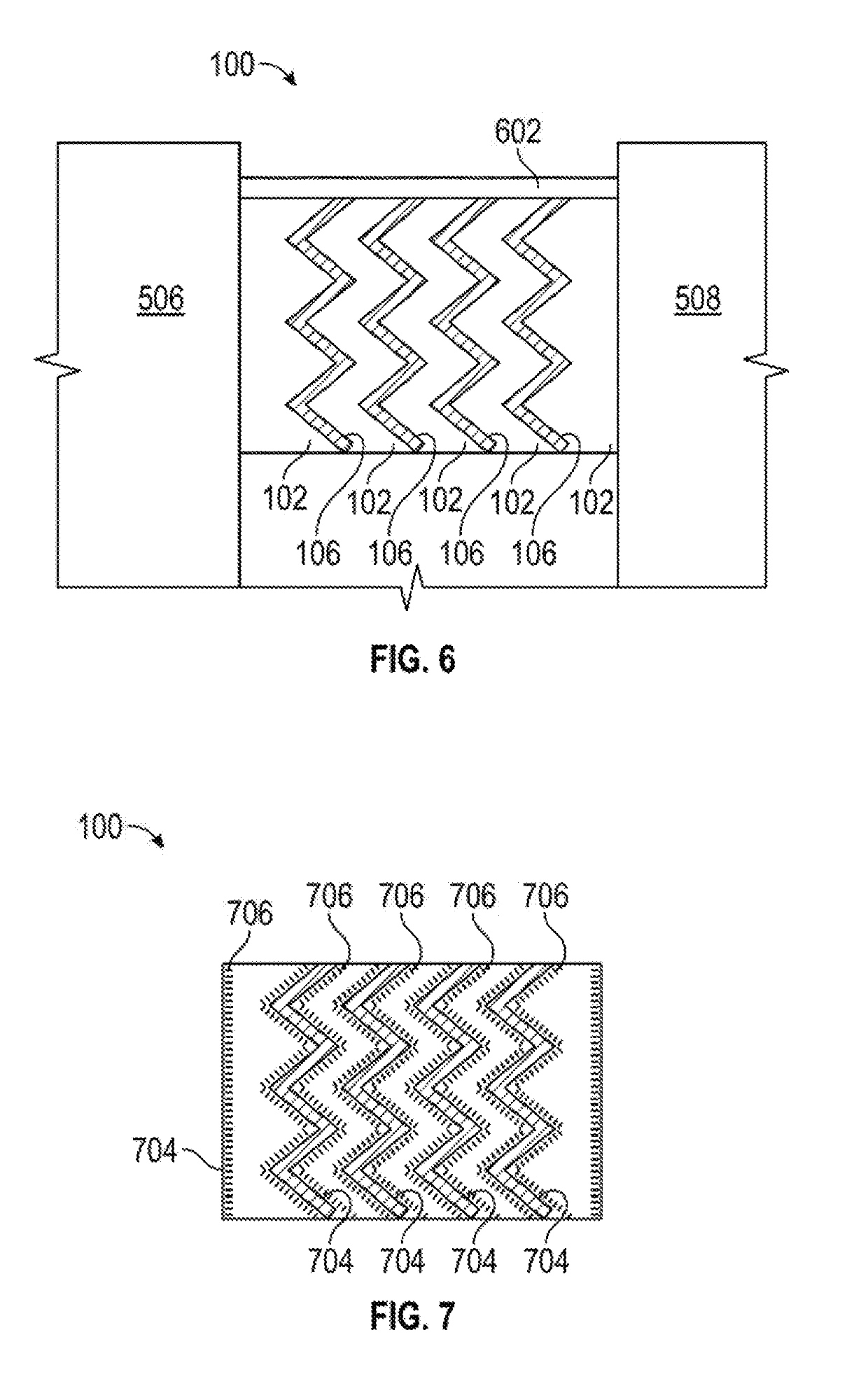If
moisture is not effectively removed it can cause damage
ranging from aesthetic in the form of white
efflorescence buildup on surface to mold and major structural damage from freeze / thaw
cycling.
Although these joints represent only a small percentage of the building surface area and
initial cost, they often account for a large percentage of
waterproofing, heat loss,
moisture / mold problems and other serious interior and exterior damage during the life of the building.
However, water can penetrate the joint substrate in many ways such as cracks, poor
sealant installation, roofing details and a
porous substrate or wall component.
When water or moisture enters the wall the normal sealing function of joint
sealant may undesirably retain the moisture in the wall.
Such joint seals are not waterproof, but retard the penetration of water into the joint by providing a seal between adjacent substrates for a time and under a
maximum pressure.
Particularly, such joint seals are not waterproof—they do not preclude water penetration under all circumstances.
While this is helpful initially to keep water out of the joint and structure it does not allow for this penetrating water or moisture to escape.
In these systems, water can sometimes be undesirably trapped in the
cavity wall, such as at a
mortar bridge in the wall, or other impediment caused by poor flashing selection, design or installation.
When a cavity wall drainage
system fails, water is retained within the structure, leading to moisture accumulating within in the wall, and to an
efflorescence buildup on the exterior of the wall.
This can also result in freeze-thaw damage, among other known problems.
Particularly, such joint seals are not fireproof—they do not preclude the burning and
decomposition of the foam when exposed to
flame.
However, the availability of additional components may be restricted by the type of foam selected.
Additionally, the use of
closed cell foams restricts the method by which any additive or fillers can be added after manufacture.
Open celled foams, however, present difficulties in providing water-resistance and typically require impregnation, infusion or other methods for introducing functional additives into the foam.
The thicker the foam core or sheet, the lower its resiliency, and the lower its
porosity, the greater the difficulty in introducing the additive.
However, lamination increases cost due to the additional time and labor required as a forming fixture is often required for construction of the lamination.
The required time and labor is further increased if additional function coatings are required to create a
composite material with the desired properties.
While this is known in the art to be somewhat effective in low performance applications and OEM
assembly uses, it also known that it cannot meet the demands of high movement seismic, shear, deflection joints or where fail-safe performance is required.
The higher compression ratios and greater volumes of
fire retardant additives are likely to cause the foam to fatigue more rapidly and to lose much of its internal
recovery force.
This proves problematic over time due to the anticipated
exposure to movement and
cycling as the impregnated foam will tend to lose its
recovery force and rely more on the push-pull connection to the joint substrate.
When foam laminations are vertically-oriented, the laminations can de-bond or de-laminate and separate from one another, leading to only the outer most lamination remaining attached to the joint substrate, resulting in the laminated foam joint sealant ceasing to provide either water, air or
fire resistance.
Unfortunately, this increases weight, alters the foam's
compressibility, and may not provide the desired result without additional fire resistant coatings or additives if a binder, such as acrylic or
polyurethane, is selected to treat the foam for fire and
water resistance.
Doing so while maintaining movement properties may affect the foam's
compressibility at densities greater than 750 kg / m3.
Ultimately, these
specialty impregnates and infused compositions increase product cost.
Historically, fire-resistant foam sealant products that use an additional fire resistant
surface coating to obtain the life safety fire properties have been limited to only +1-25% movement capability, especially when required to meet longer time-temperature requirements such as UL2079's 2 hour or longer testing.
This + / −25% movement range is too limited for most movement joints and would not meet most seismic movement and expansion joint requirements.
One well-known method for utilizing these low movement fire resistant joint sealants is to increase the width or size of the joint opening, an undesirable and expensive alternative, to allow for a commonly required + / −50% joint movement rating.
Unfortunately, supplying a pre-coated foam seal from the factory requires long leads times due to the required
curing time, which can often hold up completion of projects in the final stages.
The required multi-step process is labor and skill intensive and becomes even more challenging when the joint becomes greater than one inch, which
pose difficulties for installation and to provide an aesthetically pleasing finished joint seal.
 Login to View More
Login to View More  Login to View More
Login to View More 


